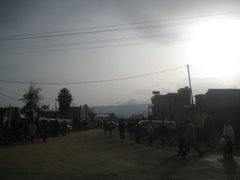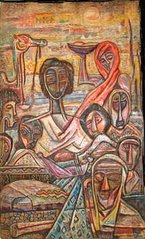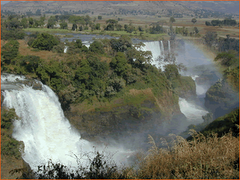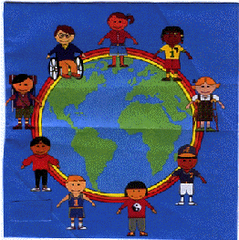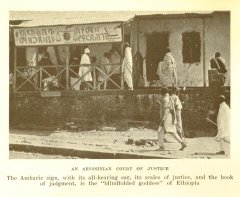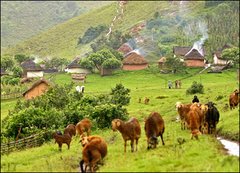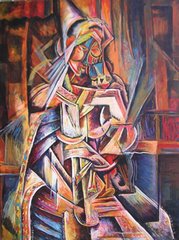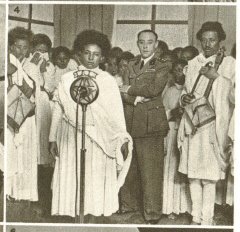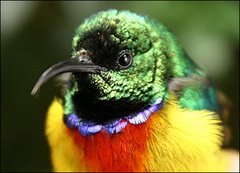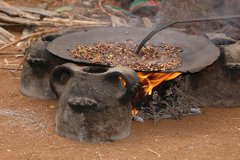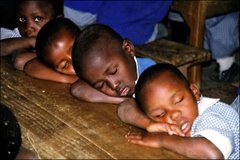March 9, 1894 - Emperor Menelik II gave royal permission to his Swiss advisor Alfred Ilg and a french semi-private company to build a railway between the capitol Addis Ababa and the French port city in Djibouti. A 99 year lease was given to Sir Alfred Ilg and the French firm.

1897 - Permission and support was given by French authorities. British initially showed opposition, because they did not want to lose business at their port in British Somaliland.
October 1897 - Construction began in Djibouti. Somali and Arabs worked mostly as laborers, Ethiopians as security force, Europeans as overseers.

Before the construction reached Ethiopia, there were serious financial problems. So, the British New Africa Company took over the project.
1901 - the British joined the French and formed the International Ethiopian Railway Trust and Construction Company
July 1901 - The first commercial train service from Djibouti to desert area near Harar
1902 - Dire Dawa was founded
Coordinates: latitude and longitude of 9°35′N 41°52′E
Relative Size: 2nd largest city in Ethiopia
Economy: A commercial and industrial center located around the railroad and on the Dechatu River
Manufactures: processed meat, vegetable oil, textiles, cement
Population: 398,000 (2005)
Ethnic groups: 48% Oromo, 27.7% Amhara, 13.9% Somali, 4.5% Gurage, 5.9% other.
Religion: 63.2% Muslim, 34.5% Orthodox Christian, 1.5% Protestant, 0.7% Catholic, 0.1% other
1902 - Menelik suspicious of French and British intentions forbid the expansion of the railway to Addis Ababa
1904 - The french and Ethiopia signed a friendly agreement to open discussion on continuing the project. However, no agreement was made.
1906 - The French-British construction company went bankrupt.
1908 - Funds moved to a new company to complete construction:
Compagnie de Chemin de Fer Franco-Ethiopien de Jibuti à Addis Abeba1909 - Construction began
1915 - Railway line reached Akaki, which is 23 kilometers from Addis
1917 - The Railway made it to Addis Ababa
1936 - Italians seized the railway during their occupation of Ethiopia
1945 - Ethiopia regained the railway
1977 - Djibouti gained independence and gained control of the French share of the railway
1977-1978 - Ogaden War - destruction of parts of railway
June 2002 - OLF bombed Railway headquarters in Dire Dawa
 2003
2003- European Commission granted Ethiopia 40 million euros to reconstruct damaged areas of railway
2006 - European Commission granted an additional 10 million euros
March 2006 - Ethiopia and Djibouti Ministry of Transport chose South African company Comazar to head the project.
November 29, 2006 - Ethiopia and Djibouti government signed an agreement to begin work on the line in 2007.
The capacity of the railway will increase from what it is today 240,000 tons to 1.5 million tons.Source: Wikipedia









